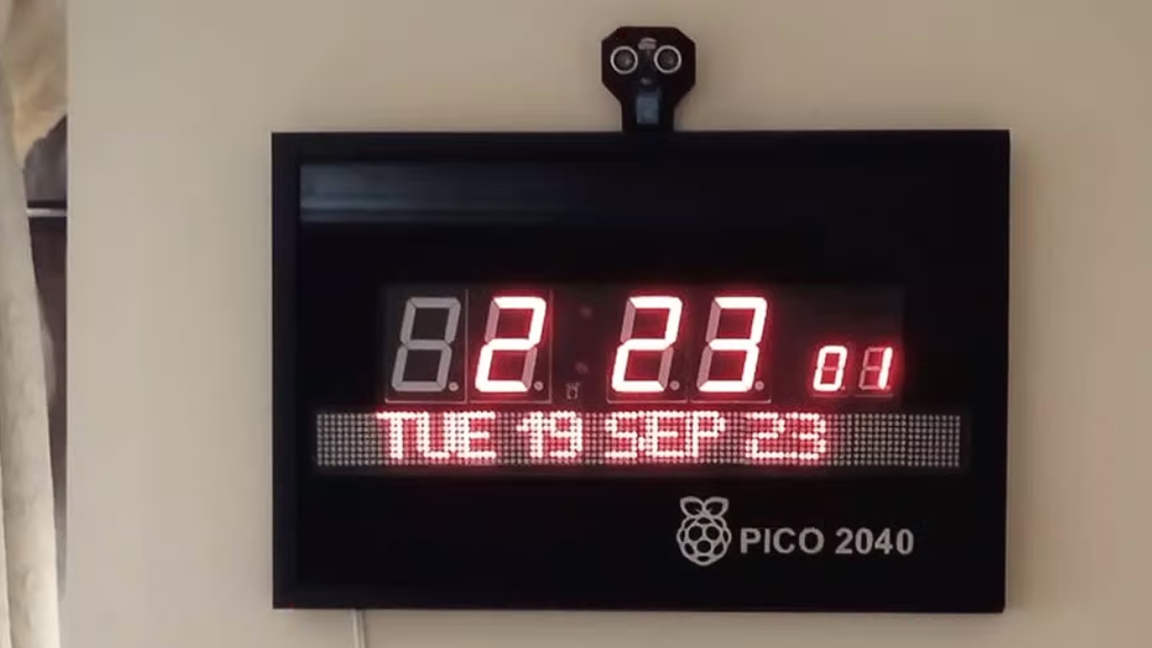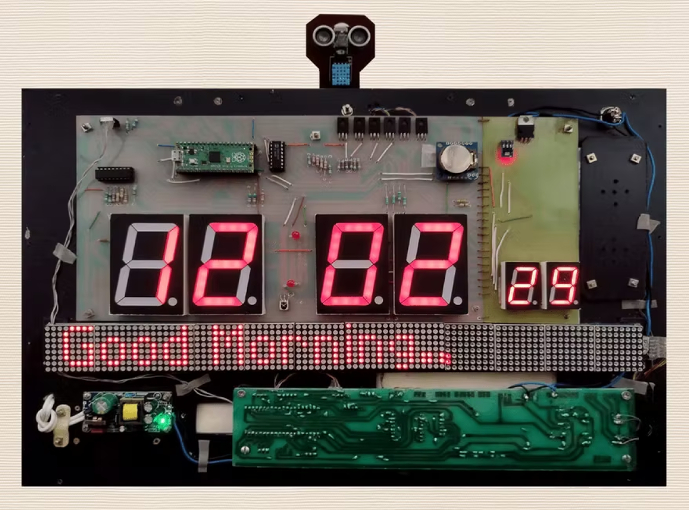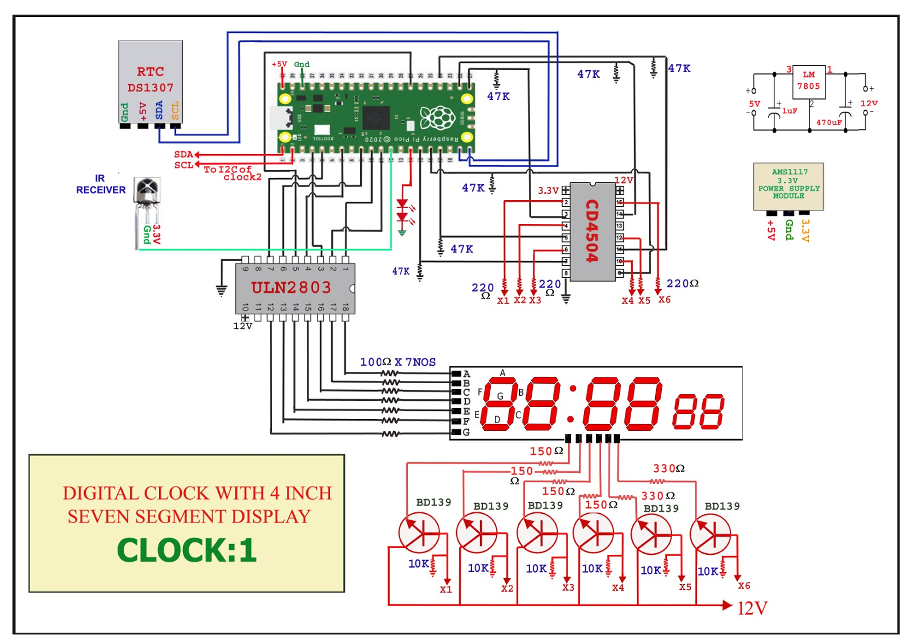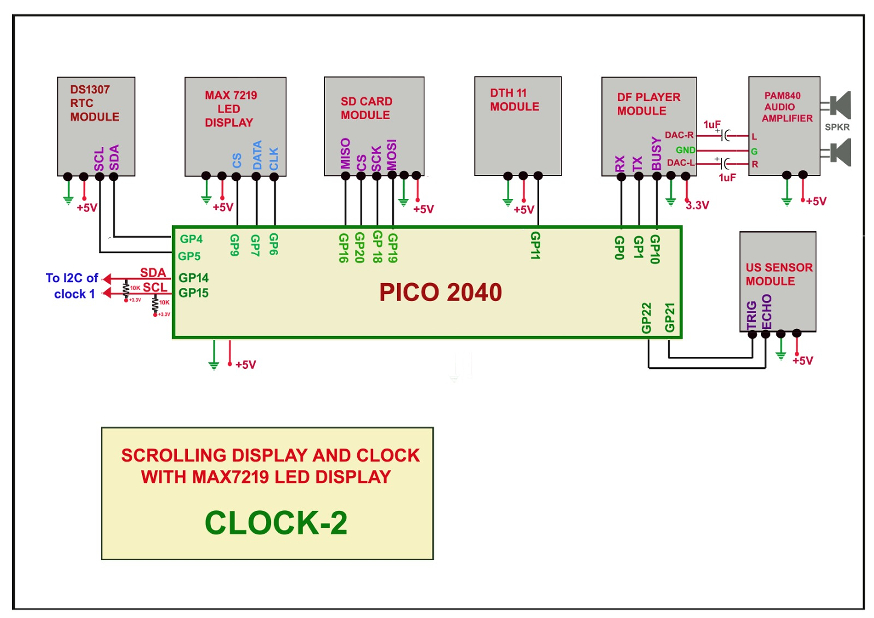
The Raspberry Pi community has become well known over the years for developing some of the most useful projects from scratch with fit and finish that rivals many professional equivalents. Today, we've got a wonderful example of such a creation put together by maker and developer Ajith Kumar B. He created a sleek dual clock bundled with some fun bonus features by using two of our favorite microcontrollers, the Raspberry Pi Pico.
Each Pico is connected using an I2C connection and has a dedicated RTC module. This enables each board to monitor time independently of one another while outputting the same results in tandem between the two displays. One Pico outputs time to a seven-segment display, while the other outputs a variety of information using a MAX7219 LED matrix panel.
Even though the Picos have a separate RTC module, they need to sync to stay in lockstep. This occurs immediately when the clock is first powered on. Once it's booted, the seven-segment display serves as the primary clock while the second rotates through various functions, like displaying custom messages or reading track titles for MP3 files.



The Raspberry Pi Picos are housed inside a custom case. The seven-segment display and matrix panel are centered in the middle, while an ultrasonic sensor is positioned on top. This sensor triggers audio files to play when people walk by. The different features can be controlled wirelessly using an IR remote programmed to interface with the clock.
The clock operates using a custom script by Ajith Kumar B. It handles the basic functions, like processing the clock output for the two separate displays and supporting MP3 so custom audio files can be played. The interface is explained in greater detail on the official project page via Hackster.
If you want to get a closer look at this Raspberry Pi project and maybe even recreate it at home, head over to Hackster for a full breakdown of how it was developed. Be sure to follow Ajith Kumar B for more cool projects and any future updates to this one.







